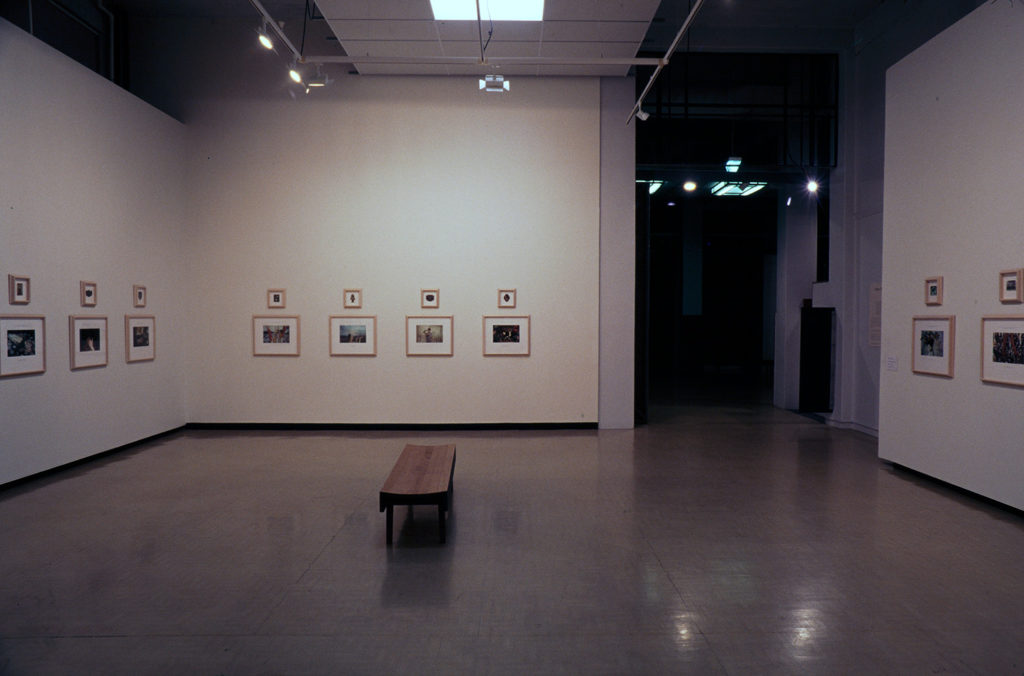OTHER VENUES Govett-Brewster Art Gallery, New Plymouth; Auckland City Art Gallery; Robert McDougall Art Annex, Christchurch, 17 January–16 February 1996; Manawatu Art Gallery, Palmerston North; Dunedin Public Art Gallery; Aigantighe Art Gallery, Timaru; Sharjah International Art Biennal, 1999 PUBLICATION Under the Aegis: The Virtues essays Marina Warner, Elizabeth Eastmond, Dougal Blyth and Tom Stevenson, Marcus Wilson, Denis L. Drysdall, Laurence Simmons
The Virtues reinvents and re-imagines classical and renaissance values in the contemporary world. Auckland artist Megan Jenkinson completed the forty works over ten years. It is her largest and most ambitious series.
The Virtues are allegorical female figures personifying positive values. These role models first emerged in Plato’s Republic. They later absorbed Christian values, then, in the Renaissance, secular ones. Their evolving line up included the likes of Love, Hope, Faith, Prudence, Temperance, Courage, Justice, Charity, and Fortitude. They were human, not superhuman. As Jenkinson writes, ‘Unlike the distant gods, they manifested our own weaknesses and potential strengths; in that lay their real comfort and identity’. Jenkinson’s series attempts to revive the Virtues’ vibrant imagery for good. Jenkinson learnt about them through studying art history, finding a connection with her own times.
In The Virtues, each of the forty works consists of two parts. There's a photo collage featuring the artist herself as one of the Virtues (with a text in Latin on the surrounding mount). And, above it, there's a smaller framed photo in an aegis shape. The aegis shapes are subtle reminders of the original perception of each Virtue, and stand in as a foil to the evils of the world.
The works don’t simply illustrate the old idea of the Virtues, they make new meanings for our new times. For example, Jenkinson's Victoria (Victory) seems defeated. Jenkinson, dressed as a soldier, holding bunches of flowers, stands before of a wall of remembrance listing names of the dead. Her Vigilantia (Vigilance), who originally spoke to watchfulness in the face of potential danger or difficulty, is depicted as a sleeping woman. Her Temperantia (Temperance) doesn’t speak of abstinence from alcohol, but pictures a pyramid of empty cleaning bottles in a landfill of waste, prompting us to think about an unsustainable consumer future.
Jenkinson is concerned by the conflict between historical virtues and modern times. The optimistic historical ideals are questioned and realigned in the contemporary context. In Capital Times, Anne Irving writes that Jenkinson ‘holds up an uncomfortable mirror to where we are now and what we’ve become’. In the Evening Post, Mark Amery says her works are to be read 'literally, figuratively, and metaphorically'.
Jenkinson produces an accompanying book, Under the Aegis: The Virtues. An essay by famous British writer Marina Warner situates Jenkinson's images in a history of feminist art historical and of philosophical scholarship. The other essays are by New Zealand academics.
In 1999, The Virtues wins the Graphics Prize at the Sharjah Biennale.





























